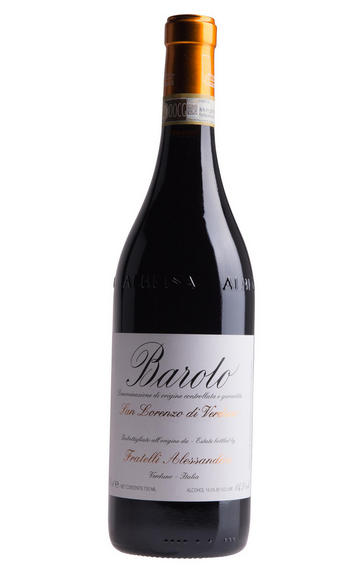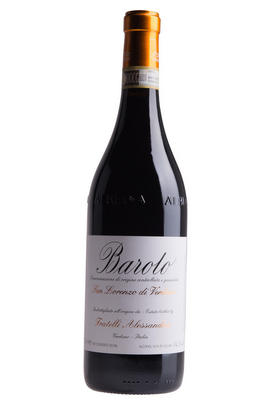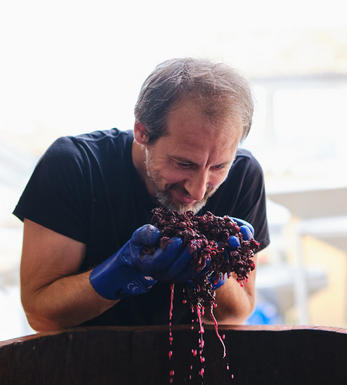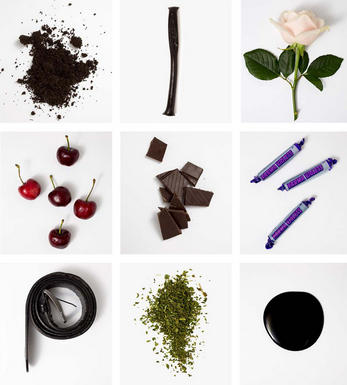
2018 Barolo, San Lorenzo, Fratelli Alessandria, Piedmont, Italy

Critics reviews
The 2018 Barolo San Lorenzo di Verduno is an especially somber wine. Black cherry, gravel, spice, leather and scorched earth show the darker side of Nebbiolo at play. There's good depth here, along with plenty of tannin. Give this a few years to soften.
Drink 2024 -2043
Antonio Galloni, vinous.com (Feb 2022)
Verduno. 28 days on the skins. A shade darker than their Del Comune di Verduno and with a firmer nose of cherry and raspberry with plenty of depth. Ripe and deep. Hints of mint and cardamom, but not from new oak as this has seen only large casks. Elegant and sappy cherry fruit palate with firm, finely chiselled tannins which never dominate the fruit. Succulent and with a fine, long, tannic grip on the finish.
Drink 2022 - 2032
Walter Speller, jancisrobinson.com (Nov 2021)
About this WINE

Fratelli Alessandria
A moment’s reflection is required before understanding the wines of Fratelli Alessandria: all the estate’s vines (except their cru Gramolere) are in the commune of Verduno. Not usually bracketed with familiar and renowned communes, the village sits on the north-eastern border of the region. It’s almost more of an extension of neighbouring Roero, with sandier soils and a moderating influence from the Tanaro river. All this adds up to a lighter, more delicate and perfumed style of Barolo – of which Fratelli Alessandria are brilliant exponents.
Today, Vittore Alessandria runs the traditional cellar, while his brother Ale tends 15 hectares of vineyards. Their first vintage was in 1978, and Fratelli Alessandria was the first producer to put Monvigliero on a label. 2001 saw the first Gramolere and 1997 was their first vintage of San Lorenzo, which is only produced in their best vintages – of course, there is a 2019!

Barolo
Located due south of Alba and the River Tanaro, Barolo is Piedmont's most famous wine DOCG (Denominazione di Origine Controllata e Garantita), renowned for producing Italy's finest red wines from 100 percent Nebbiolo.
Its red wines were originally sweet, but in 1840 the then extant Italian monarchy, the House of Savoy, ordered them to be altered to a dry style. This project was realised by French oenologist Louis Oudart, whose experience with Pinot Noir had convinced him of Nebbiolo's potential. The Barolo appellation was formalised in 1966 at around 1,700 hectares – only a tenth of the size of Burgundy, but almost three times as big as neighbouring Barbaresco.
Upgraded to DOCG status in 1980, Barolo comprises two distinct soil types: the first is a Tortonian sandy marl that produces a more feminine style of wine and can be found in the villages of Barolo, La Morra, Cherasco, Verduno, Novello, Roddi and parts of Castiglione Falletto. The second is the older Helvetian sandstone clay that bestows the wines with a more muscular style. This can be found in Monforte d'Alba, Serralunga d'Alba, Diano d'Alba, Grinzane Cavour and the other parts of Castiglione Falletto. Made today from the Nebbiolo clones Lampia, Michet and Rosé, Barolo has an exceptional terroir with almost every village perched on its own hill. The climate is continental, with an extended summer and autumn enabling the fickle Nebbiolo to achieve perfect ripeness.
Inspired by the success of modernists such as Elio Altare, there has been pressure in recent years to reduce the ageing requirements for Barolo; this has mostly been driven by new producers to the region, often with no Piedmontese viticultural heritage and armed with their roto-fermenters and barriques, intent on making a fruitier, more modern style of wine.
This modern style arguably appeals more to the important American market and its scribes, but the traditionalists continue to argue in favour of making Barolo in the classic way. They make the wine in a mix of epoxy-lined cement or stainless-steel cuves, followed by extended ageing in 25-hectoliter Slavonian botte (barrels) to gently soften and integrate the tannins. However, even amongst the traditionalists there has been a move, since the mid-1990s, towards using physiologically (rather than polyphenolically) riper fruit, aided by global warming. Both modernist and traditional schools can produce exceptional or disappointing wines.
Recommended traditionalist producers:
Giacomo Borgogno, Giacomo Conterno, Bruno Giacosa, Elio Grasso, Marcarini, Bartolo Mascarello and Giuseppe Mascarello.
Recommended nmdernist producers:
Azelia, Aldo Conterno, Luciano Sandrone, Paolo Scavino and Roberto Voerzio

Nebbiolo
Nebbiolo is the grape behind the Barolo and Barbaresco wines and is hardly ever seen outside the confines of Piedmont. It takes its name from "nebbia" which is Italian for fog, a frequent phenomenon in the region.
A notoriously pernickety grape, it requires sheltered south-facing sites and performs best on the well-drained calcareous marls to the north and south of Alba in the DOCG zones of Barbaresco and Barolo.
Langhe Nebbiolo is effectively the ‘second wine’ of Piedmont’s great Barolo & Barbarescos. This DOC is the only way Langhe producers can declassify their Barolo or Barbaresco fruit or wines to make an early-drinking style. Unlike Nebbiolo d’Alba, Langhe Nebbiolo can be cut with 15% other red indigenous varieties, such as Barbera or Dolcetto.
Nebbiolo flowers early and ripens late, so a long hang time, producing high levels of sugar, acidity and tannins; the challenge being to harvest the fruit with these three elements ripe and in balance. The best Barolos and Barbarescos are perfumed with aromas of tar, rose, mint, chocolate, liquorice and truffles. They age brilliantly and the very best need ten years to show at their best.


Buying options
Add to wishlist
Description
Adjoining Monvigliero at the north-eastern end of the commune, the vineyard is marked by a knoll in the centre, from which the vines flow down the slope. The vineyard is a little lower than its neighbour and the soil is also siltier. This wine is always one of the gentler expressions of Verduno. The ’18 vintage has silkier, creamier texture than usual, which is deliciously beguiling. Drink 2023-2032
Mark Pardoe MW, Wine Director, Berry Bros. & Rudd (Mar 2022)
wine at a glance
Delivery and quality guarantee